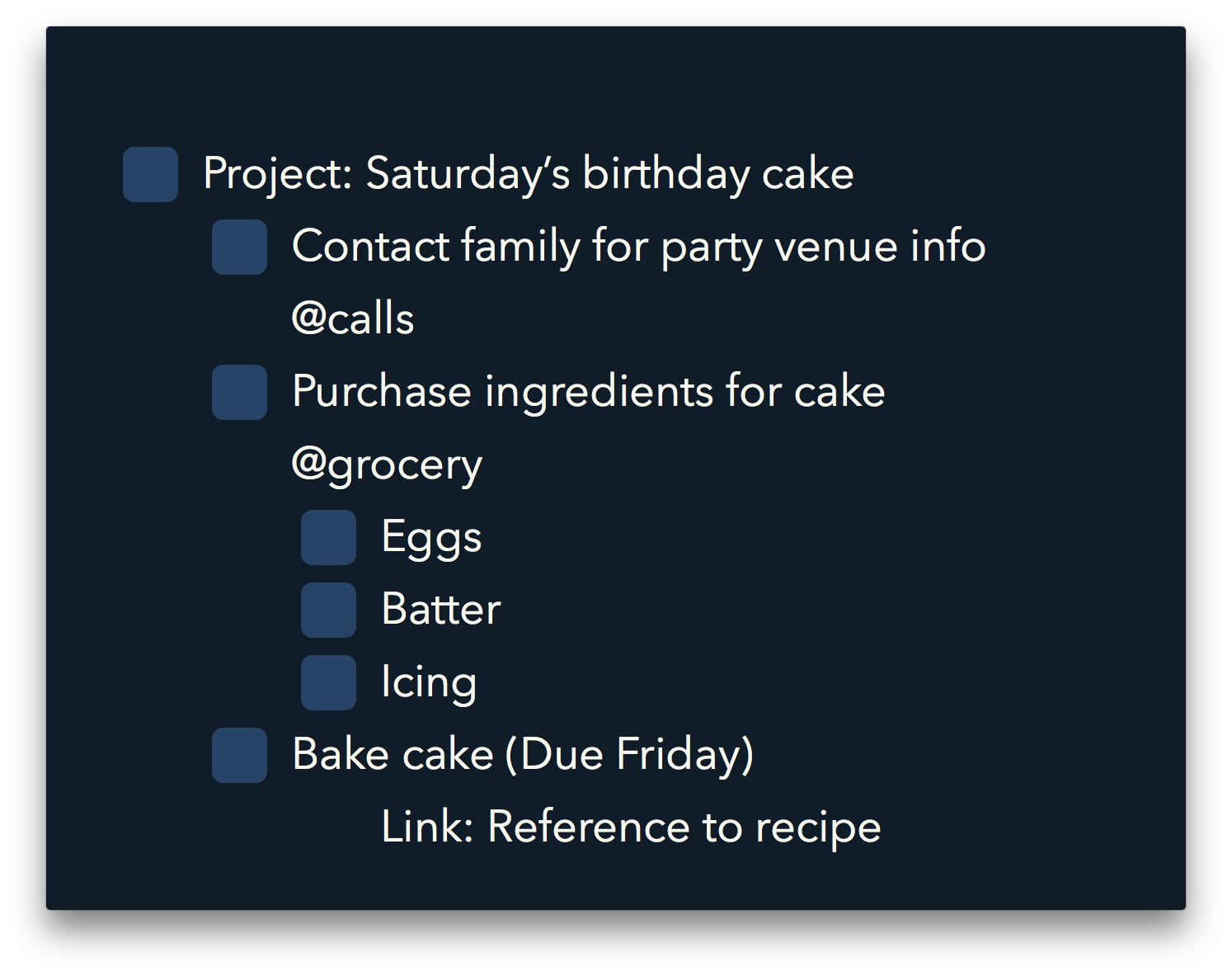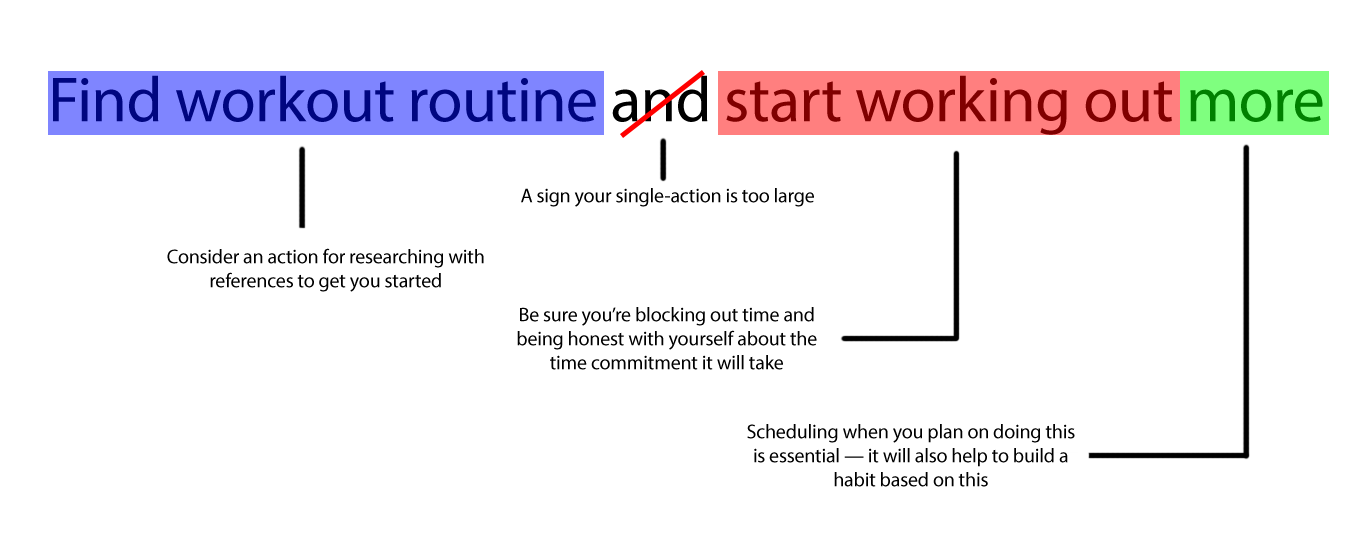Projects vs. Actions
You finally decide you’re going to start working out more. Maybe you’re given the task to bake the birthday cake for your nephew’s birthday party this upcoming Saturday. You’re a busy person and you have to take control of all these things that are consuming your life. Naturally, we’ll take out our phone or journal and scribble down "work out more" and "birthday cake for Saturday" in the to-do list. Although you may be compelled to get in and out of your task manager as soon as possible to avoid wasting time and being less productive, you have to describe things in such a way that your mind can both remember and properly take action upon them.
You put these objects in your system as single-actions or just one measly to-do item that can be checked off in the time it takes you to recuperate from a sneeze — that’s far too fragile for something so substantial. Working out more and baking a cake are large tasks — in fact, they’re so large, they’re not even tasks; they’re projects comprised of multiple tasks — some of which might even have sub-tasks!
Baking a Cake

This is three day’s work all under one single checkbox — what are you, some sort of superhuman??

Much better. We’re splitting up the task into actionable items, contextualizing them so we know where we have to be and what each item pertains to, setting a due date so it’s sure to not fall through a crack, and linking to some documentation we need to reference for baking once we reach that action.
Working Out More Often
Examining the task, "Find workout routine and start working out more" can teach us a lot about how to structure tasks and projects.

- Find workout routine: This is a series of actions by itself. Unfortunately, you don’t have all the information and it’s unclear how long this will take. Researching various routines and making a decision is an action item but it always hurts accepting that you’re just deciding to decide.
- and: If you’re connecting two things together in your single-action task it’s probably not a single action and you should consider separating them or breaking them down into a project like we’re doing here. If you see a task with two tasks within it, you’re going to be using brainpower you should’ve already spent when recording it in the first place. You may even defer completing the task because it’s less comprehensible.
- start working out: A statement like this is telling you a schedule is in order. Blocking out time — like Cal Newport discusses in Deep Work — is a great way to ensure everything gets done and nothing falls through the cracks. When you see that you have every other morning blocked off for working out along with your to-do list encouraging you to check off that you worked out on those days, there are multiple parties holding you accountable.
- more.: A statement like this is telling you forming a habit is in order. It’s great to schedule and allocate time, but at a certain point, you may want to make something so regular that you form a habit out of it like brushing your teeth, showering, and even falling asleep.
Is it ever okay to create an action item like this? Sometimes — if you’re on the train, running around, or in the middle of multiple different tasks, you may want to insert a vague and curt item in your inbox. The important part is that you extrapolate the entire project from that single-action as soon as possible. It’s merely there to remind you to really think it through and plan out the task.
It will take time to truly appreciate the difference between projects, tasks, actions, events, and other materials. Understanding what works for you is the most important part and making the system work in tandem with your life is essential to staying organized and productive.